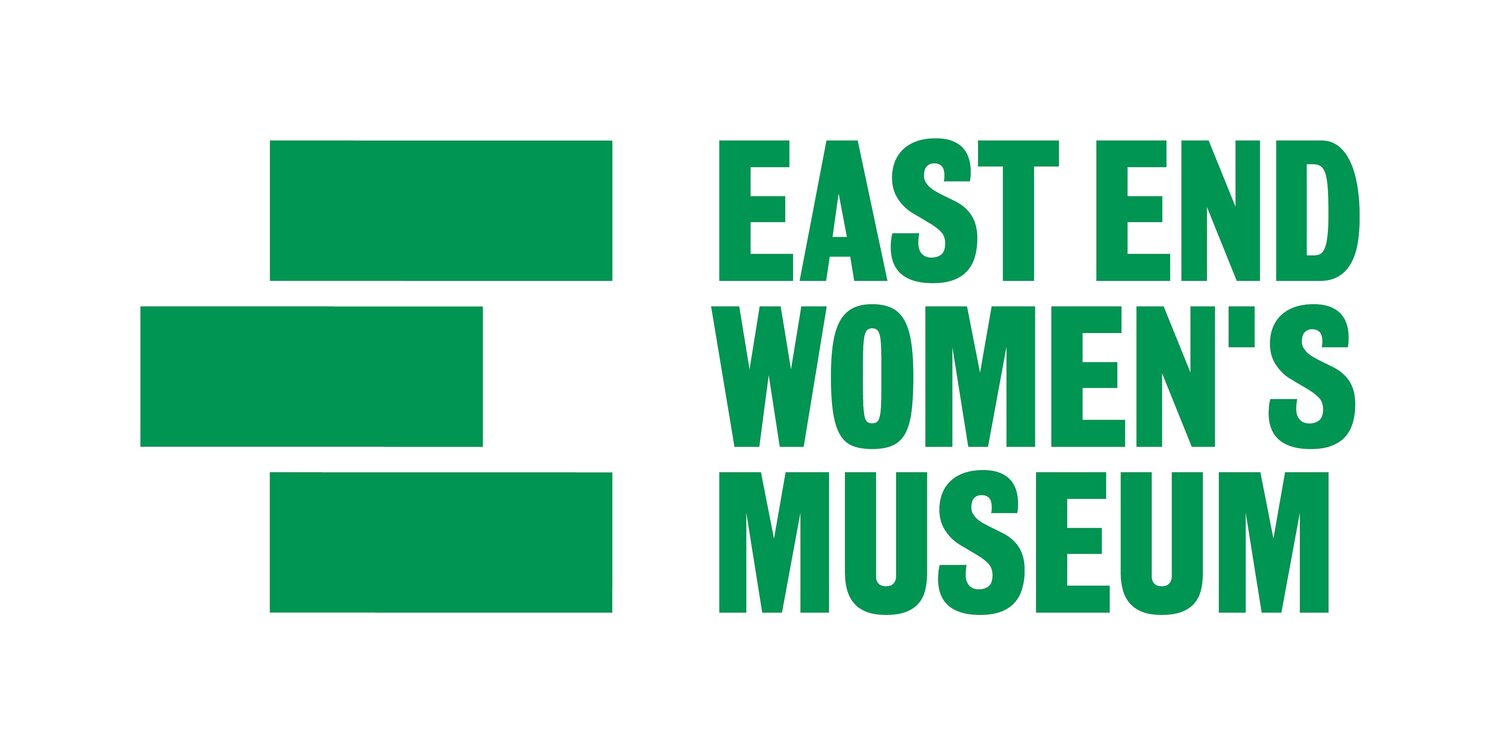Early Life and Born to Struggle
“I can tell you that the East End of London is the most extraordinary place I have ever known.”
May Hobbs was born in Hoxton, in St Leonard’s Hospital on Kingsland Road, in 1938. She was born into a working-class family and community: her father was a foreman in a brewery in Moorgate, and her mother was a machinist in a men’s suit factory by City Road. At the age of two, Hobbs was evacuated from London during the Second World War, and sent to live in Somerset. As her parents decided they could no longer look after her, for reasons that remained unknown to her, Hobbs’s early life was spent in various foster families around the UK. After Somerset she lived in Slough, before eventually returning to Hoxton under the care of Jenny Balby, a family relation and “one of the greatest women that ever walked down Hoxton Street”, according to Hobbs’s autobiography, Born to Struggle.
Cover of Hobb’s autobiography Born to Struggle (1973) Image courtesy of Sarah Taylor
It is in Born to Struggle, published in 1973, that Hobbs details her childhood, her life in Hoxton, her campaigning in striking and unionisation, and most importantly, her pivotal role in the Night Cleaners’ Campaign in the early 1970s. Now out of print, Born to Struggle is also an astutely funny and clever depiction of East London. Hobbs describes the working-class “spirit of friendship and community” in the streets of Hoxton. She paints an animated and vibrant image of Hoxton Market, of Saturday evenings spent waiting outside pubs with other children while the adults drank inside, and of the ever-classic East London pie-and-mash shops which were “like dining at Claridge’s – only better”. In the last section of Born to Struggle, titled “The Arts and Crafts Department”, Hobbs shrewdly describes several different ways of making money in the East End – including street bookmaking and shoplifting.
Born to Struggle is an autobiography, but it also serves as a snapshot of East London society and a comment on class relations and gentrification. Hobbs is not afraid to point out the growing middle-class demographic in East London and the middle-class authors “for whom the East End was like a figment of their imaginations”. In Born to Struggle, Hobbs depicts the poverty, hardships and struggles of working-class Hoxton, particularly for the working-class women.
Night Cleaning and the Cleaners’ Action Group
As a young woman, Hobbs held a range of factory and industrial jobs. Her first experience of unfair wages and poor working conditions was at a box-making factory in Shoreditch. Barely out of school, Hobbs recognised the need for fair wages and unionisation and organised a strike within the factory to demand for higher pay – which worked. From this point on, Hobbs organised, campaigned and struck for better wages and more favourable conditions, especially for working-class women.
By the 1970s, women’s participation in the workplace had significantly increased. Following women’s manufacturing work during the Second World War, second-wave feminism and the growing demand for gender equality in the 1960s, and the Equal Pay Act in 1970, women were entering the labour market as part-time and full-time workers. However, despite the growing numbers of women in work, women were still generally excluded from trade unions and labour activism, which was traditionally male-based. Many women, including May Hobbs, found work as night cleaners. This work was physically demanding and exhausting; night cleaners would generally work between 10 p.m. and 6 a.m., covering between 40 to 50 offices during an average week, and would be expected to clean staircases and toilets alongside office spaces. Night cleaners usually worked in large governmental buildings, embassies and airports. Despite the work being tiring and taxing, many women, especially those with young children, went into night cleaning for pragmatic reasons. It offered time for women to look after children during the day, and, when their husbands returned from work, they could also go out and earn their wage.
Yet the wage was desperately low – especially given the terrible conditions. In an interview with Hobbs in the Socialist Worker from 1970, she states the typical hourly pay as being 5s6d – equating to about £4.50 nowadays. Alongside low wages, the night cleaners had terrible work security – no sickness pay, holiday pay only after a year and no notice period from the employers: they were often fired on the spot. Furthermore, the night cleaners tended to be employed by large-scale contractors such as General Cleaning Contractors, who hired the cleaners out to different agencies and companies. If a night cleaner complained about her wage or working conditions or attempted to unionise, she would either be moved to another site, or, more likely, was made unemployed and then blacklisted by other contractors. For these working-class women night cleaners, it was very difficult to organise and unionise without fear of losing their jobs.
By the mid-1960s, Hobbs was living with her husband Chris and their young children. They had gone through years of living in poverty, with temporary jobs and housing arrangements. They had been evicted unfairly, and Hobbs had even spent a month in prison for harbouring stolen items, although she claimed her innocence in Born to Struggle. Hobbs remained socially and politically active throughout: she organised rent strikes in poorly built flats, and in the early 1960s, joined the local Labour party in Harringay. Towards the late 1960s, Hobbs found work as a night cleaner supervisor at Hornsey College of Art. The wages were still as low as when she had first started night cleaning, several years before. Her job ended and she struggled to find more work due to her “photograph and bits about what [she] was up to … appearing in the papers.” Her political and social activism had led her to be blacklisted.
She decided to set up a union for the night cleaners with her friend Ann and formed the Cleaners’ Action Group (CAG). They marched, printed leaflets, canvassed for support, organised strikes and spread their aims and message to other night cleaners. Although the CAG originated in London, the campaign spread to Birmingham, Manchester and Norwich. The CAG also had the involvement and help of the Women’s Liberation Movement (WLM), a large second-wave feminist organisation, which originated and organised at the National Women’s Liberation Conference at Ruskin College, Oxford, in 1970.
Sheila Rowbotham, a socialist feminist historian and pivotal member of the WLM, met May Hobbs in 1970. Rowbotham describes how Hobbs had made contact with the International Socialists group, who then in turn had made contact with the WLM and Rowbotham. Rowbotham leafleted and canvassed alongside Hobbs who in turn supported the WLM. In March 1971 she joined the WLM march holding a Cleaners’ Action Group placard and calling for the “self organisation of women at their workplaces”.
Feminist press, such as Spare Rib and Shrew, began to report on Hobbs and her campaign in the early 1970s. A special edition of Shrew, from December 1971, dedicated the whole newsletter to the campaign, for example, featuring timelines of the movement, interviews with CAG members and detailed descriptions of the poor working conditions of the night cleaners. In 1975, a documentary was even made about the campaign. Nightcleaners, produced by the Berwick Street Film Collective, depicts the women’s lives, their work and the campaign. It features interviews with the cleaners, shots of Hobbs addressing crowds of women, the CAG organising with the WLM and scenes of the night cleaners at work. It is a credit to Hobbs, alongside all of the night cleaners, that their campaign found its way into mainstream feminist press as well as radical and alternative film.
The Campaign’s Result and Cleaning Activism Now
Thanks to Hobbs’s relentless activism, the campaign won some successes. Two strikes organised by the CAG and WLM in 1972, at the Ministry of Defence building in Fulham and the Old Admiralty building in Whitehall, gathered positive media attention and trade union support and resulted in the night cleaners achieving a considerable weekly pay rise of £4.50, plus an additional night allowance and “no victimization.”
Furthermore, by July 1972 the CAG had helped to unionise around 75% of the Shell company night cleaners. However, by 1973 the momentum of the campaign had begun to decline. There were internal fissures within the group; Hobbs had become “impatient”; and some trade unions, such as the Transport and General Workers’ Union (TGWU), were still paying little attention to female workers, viewing their pay as “pin money” (a phrase used to describe money given by a man to his wife).
Generally, however, the campaign can be seen as a success, despite ending after a short amount of time and the relatively small material gains. The profiles of the night cleaners had gained sympathetic attention in the media and the campaign began to shake up the formal trade union structures. Even after the campaign ended, cleaners around the UK would still gather to watch Nightcleaners and it was “shown at labour, socialist and women’s meetings around the country.”
Trade unions and labour activism no longer represent or cater to only men. May Hobbs militantly and successfully created spaces for working-class women in labour and social activism, and encouraged the need for working-class women to organise and unionise. Hobbs also bridged a gap between two worlds: the traditionally male working-class unions, and the (generally) middle-class WLM. Even in historiography, there is a neglect to focus on working-class women. As Sheila Rowbotham writes, “the mobilisation of working-class women has been neglected in the histories of the sixties and of the women’s movement.” This is made evident by Hobbs’s legacy – there is little information on what happened to Hobbs after the campaign ended, other than one mention that she may have moved to Australia. Despite this, her lasting influence for night cleaning remains.
Moreover, Hobbs’s important and influential campaign is part of a larger narrative of working-class women demanding fair wages and working conditions. In 1976, for example, Jayaben Desai led the Grunwick factory strikes in Willesden. Even now, cleaners – who still tend to be women, many of whom are migrants and women of colour – suffer poor working conditions and low wages. In the past ten years or so, many cleaning groups, particularly out-sourced cleaners, have gone on strike to demand the London Living Wage and equal employment rights. Following the nationwide lockdown due to the Covid-19 pandemic, these strikes are continuing as cleaners demand sick pay and job security guarantees in case of office closures. Their workplaces and job security has taken on a new fragility in the context of the pandemic.
May Hobbs’ achievements for cleaning campaigns, night cleaning unions and her position as the working-class heroine of Hoxton cannot be understated. She remained an activist, feminist and campaigner throughout – whether in the name of rent, wages, the homeless, young mothers and children, or “anything else where justice needs to be fought for in the face of reactionary governments, big business [and] bureaucracy.”
Author
Sarah Taylor is a Masters graduate who has lived in East London for several years. Her historical interests lie in gender, LGBT and social activism history. She recently completed her MA at the University of Amsterdam in American Studies. She also runs a feminist book blog, Dissolving Margins.
Sources
‘Building a Socialist Library’ (2015) https://lipsticksocialist.wordpress.com/2015/02/12/building-a-socialist-library-10-born-to-struggle-by-may-hobbs/
Jane Holgate, ‘Unionising the low paid in London: the Justice for Cleaners campaign: a case study’, 2009
May Hobbs, Born to Struggle (Quartet Books Limited: London) 1973
Nightcleaners, Berwick Street Film Collective, 1975
Sally Alexander speaking about May Hobbs and the Night Cleaners’ Campaign on the British Library website http://www.bl.uk/learning/histcitizen/sisterhood/clips/activism/campaigns-and-protests/143242.html
Sheila Rowbotham, ‘Jolting Memory: Nightcleaners recalled’, 2008
Shrew, October 1972
Socialist Worker, September 1970
Spare Rib, July 1972
‘Today in London radical history: cleaners win strike in Ministry of Defence buildings, 1972’ (2016) https://pasttenseblog.wordpress.com/2016/08/16/today-in-london-radical-history-cleaners-win-strike-in-ministry-of-defence-buildings-1972/






